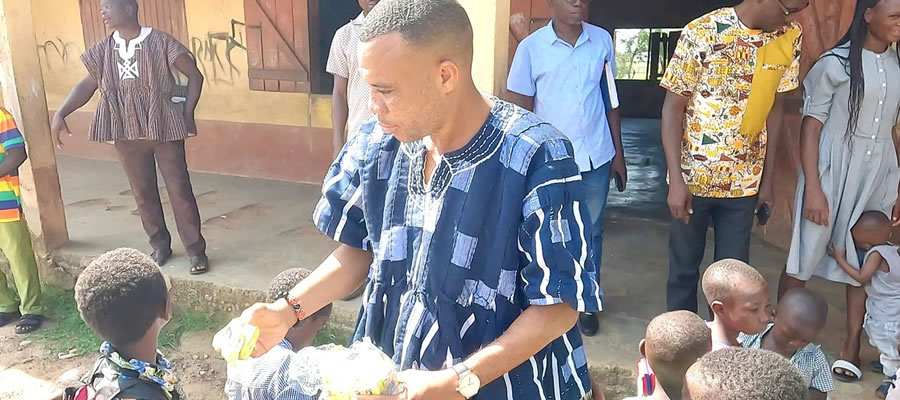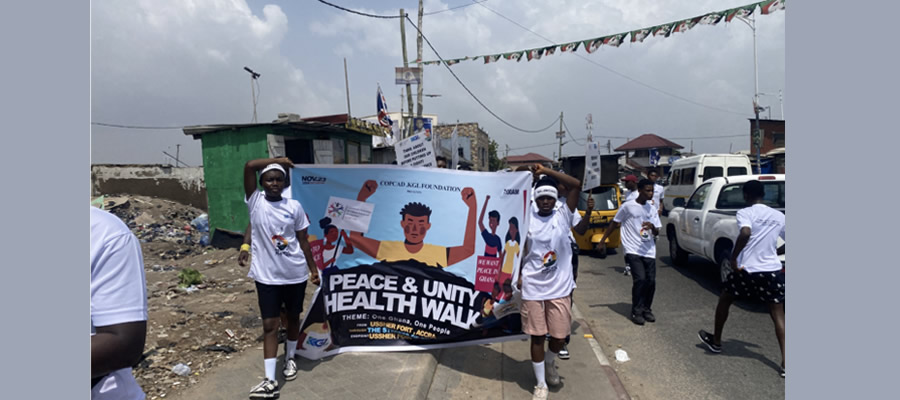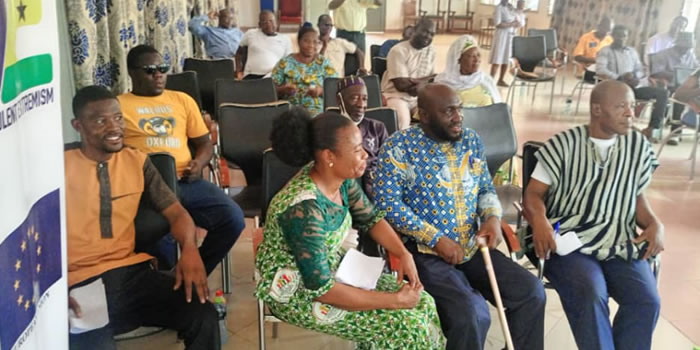

Physical Features
Relief and drainage
The district is underlain mainly by Birrimian and Granitic rock formation. The relief of the district is generally low lying and undulating with isolated hills rising up to 300 meters above sea level in the western part of the district. Notably among these hills are Fie (9280 metres above sea level), Busono 350 metres, and Zambao 360 metres. The district is mainly drained by the Sissili River and its tributaries. There are however some few dug-outs and ponds which are used for livestock rearing, crop production and domestic purposes.
Climate
The Kassena-Nankana West District falls within the interior continental climatic zone of the country characterized by pronounced dry and wet seasons. The two seasons are influenced by two air masses. First is the warm, dusty and dry harmattan air mass which blows in the north easterly direction across the whole district from the Sahara desert.
During its period of influence (late November – early March) rainfall is entirely absent, vapour pressure is very low (less than 10mb) and relative humidity rarely exceeds 20.0% during the day but may rise to 60.0% during the nights and early mornings.
Temperatures are usually modest at this time of the year by tropical standards (26°C – 28°C). May to October is the wet season.
During this period, the whole of West African sub-region including Kassena-Nankana West District is under the influence of a deep tropical maritime air mass. This air mass together with rising convention currents provides the district with rains. The total rainfall averages 950 mm per annum. The above phenomenon adversely affects the water table and reduces underground water. Water harvesting is probably a viable option in the district.
Vegetation
The vegetation is mainly of Sahel Savannah type consisting of open savannah with fire swept grassland separating deciduous trees among which may be seen a few broad-leafed and fire-leached tree species. Some of the most densely vegetated parts of this district can be found along river basins and forest reserves. Examples are the Sissili and Asibelika basins. Most of these trees in the forested areas shed their leaves during the dry season.
The human activities over the years have also affected the original vegetation considerably. Common trees which are also of economic importance include Dawadawa, Sheanut, Baobab, Nim and Mango. The low vegetation cover of the area hampers sufficient rainfall thereby reducing underground water supply.
Soil
Two main soil types can be found in the district. These soil types are the Savannah Ochrosols and the ground water laterite. The northern and eastern parts of the district are covered by the Savannah Ochrosols, while the rest of the district is characterized by ground water laterite. The Savannah Ochrosols are porous, well drained, loamy, mild acidity and interspersed with patches of black or dark grey clay soils. This soil type is suitable for cultivation of cereals and legumes.
The ground water laterites are developed over shale and granite. Due to the underlying rock type, they become water logged during the rainy season and dry up during the dry season, thus causing cemented layers of iron-stone which make cultivation difficult. This would probably have contributed significantly to food insecurity in the district.
Date Created : 11/21/2017 2:40:42 AM








 facebook
facebook
 twitter
twitter
 Youtube
Youtube
 +233 593 831 280
+233 593 831 280 0800 430 430
0800 430 430 GPS: GE-231-4383
GPS: GE-231-4383 info@ghanadistricts.com
info@ghanadistricts.com Box GP1044, Accra, Ghana
Box GP1044, Accra, Ghana